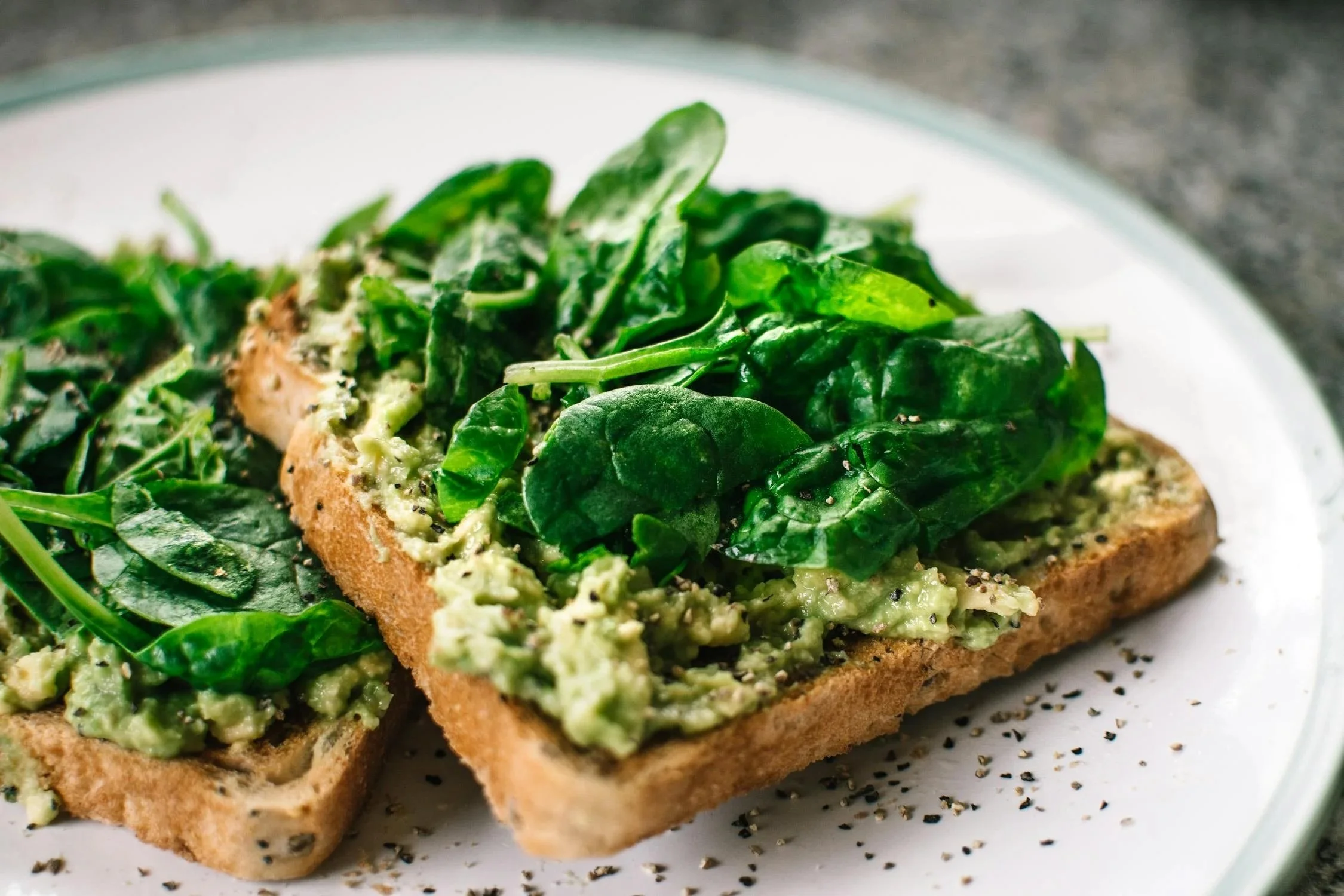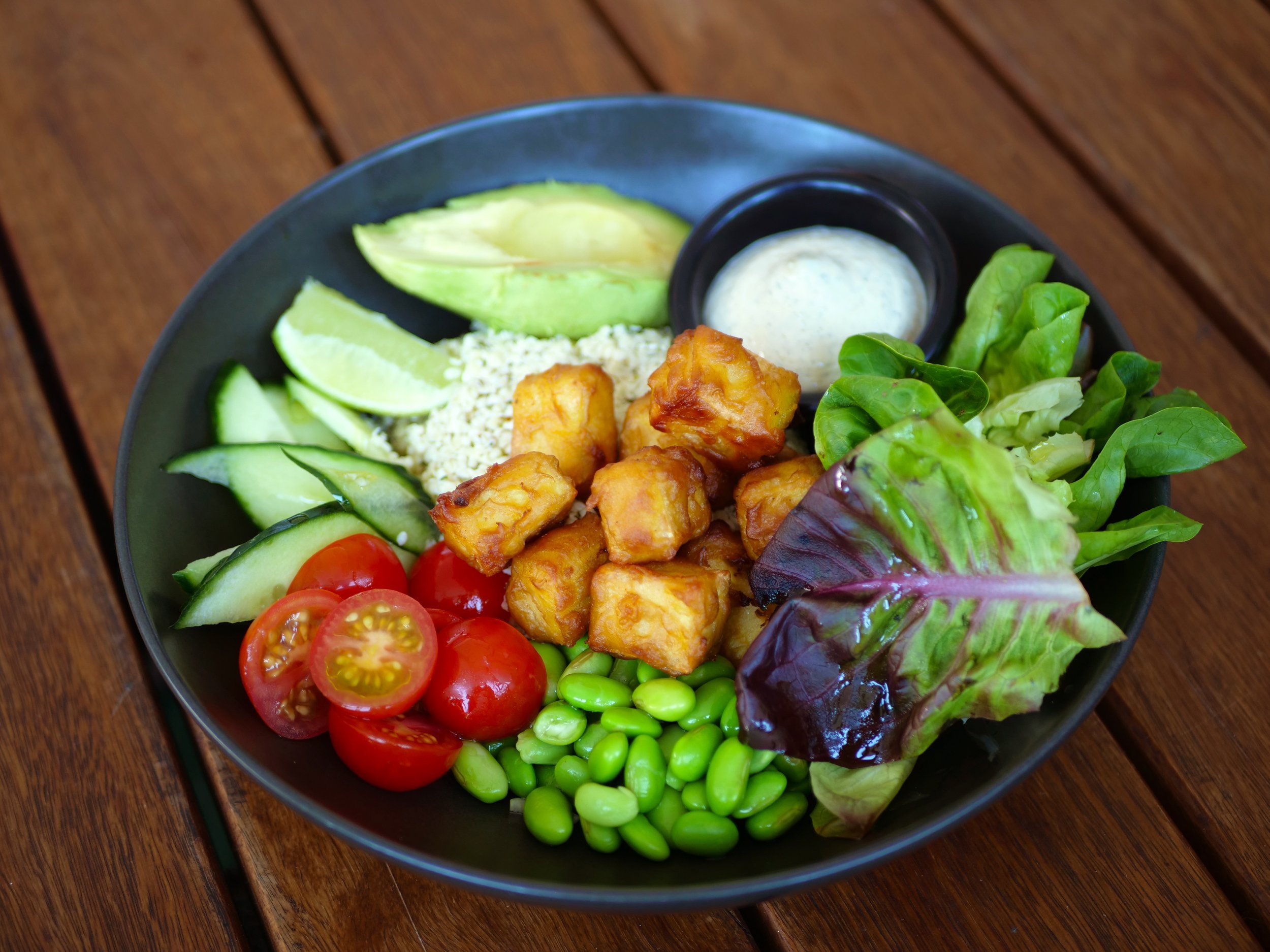Engineering the inclusive menu
/There’s no question that modifying your menu to make it more inclusive of multiple dietary preferences like gluten free, vegan and plant-based makes sound business sense. It enables you to expand your potential customer base, and with more and more Australians being diagnosed with food intolerances and allergies than ever before, this is not just a case of catering to trends – it’s about delivering menu options which satisfy the evolving needs of the modern foodservice market.
ADAM MOORE
FSR ConSULTING CHEF
While demand for plant-based meals is still strong, the category has seen a rationalisation of suppliers over the past several years, reports consultant chef Adam Moore. “I think there was a bit of oversupply, with too many producers and some products which didn’t meet quality expectations, so we’ve seen a lot of consolidation, but innovation at the same time,” Adam says. “Plant-based milk was the smallest category originally but it’s now one of the biggest, and still growing – almond, macadamia, soy and oat milk are in strong demand. We’re also seeing more talking about the benefits of plant-based – and perhaps there wasn’t enough initial education of the marketplace, but it’s happening now.
Technological advancements are also driving change in plant-based – “We’re now seeing great examples of high moisture extrusion in Australian plant-based products, which deliver superior texture to the old soy-based proteins,” Adam says. “There are innovative companies making inroads and generating interest in the next generation of plant-based, so it’s definitely not going away. What’s now coming up in the back end, which wasn’t a big thing for Australians in the past, is the sustainability factor – there is a big push to incorporate that into the menu.
“As of this year, for the first time vegan and plant-based cuisine is being taught in our culinary schools”
— Chef Adam Moore
“As of this year, for the first time vegan and plant-based cuisine is being taught in our culinary schools, and the education piece is becoming the hero and starting to change the dynamics of the market. The e-numbers, that is artificial additives, are off the oil, and it’s the cleaner label products, the ones using all natural ingredients, that are going to be the winners here. We’re seeing this sustainability angle in the marketing of plant-based fish – there’s been a lot of talk about overfishing of our oceans, and the fact that in the last decade we’re eradicated some 18,000 species of fish globally, so there is clearly an education piece around which is resonating with consumers.”
Three steps to follow
Adam says there are three steps to follow in delivering a truly inclusive menu for the contemporary market. “The first is to train and educate your team. Allergy Australia have free online training modules and some terrific resources which you can download from their website, not just around allergens but also food intolerances. For example, everyone needs to know that if you’re cooking a gluten free schnitzel, it’s not enough to ensure the crumb is truly gluten free – you can’t fry it in the same oil as regular schnitzel, because that can lead to cross-contamination.
“On the allergen front, your team need to be aware of the most common allergens – and how to read food labels carefully to identify them. We need to educate, even about how to respond to a case of anaphylaxis triggered by a food allergy, which is usually treated with an epipen injector – it’s a good idea to keep some of these onsite in your business and make sure staff know how to administer them.
“The second point is to take a multifaceted approach. That is, create recipes which will fulfil several dietary categories at once – such as meals which are not only gluten free, but plant-based, vegan and allergen free as well. Look for ingredients which will work across all these – like mushrooms, which are gluten free, virtually allergen free, full of nutrients, and suitable for vegan and vegetarian dishes – that can fill a gap on a lot of menus. This way you’re not putting the whole menu under pressure.
“The third point is to create components that you can swap out across the menu. For example you might have a lamb dish which uses a crumbed fillet, and another dish where you have a braised fillet with mashed potato, and you can swap out one ingredient for another to make it gluten free, or allergen free, or plant based really easily. That’s something chefs can do quite simply in response to customer demand – it’s just a question of front of house and back of house both understanding what’s in the ingredients and checking with the chef.”
Use menu coding rather than sectioning
Gary Johnson
FSR COnsulting Chef
Chef Gary Johnson makes the point that how you promote plant-based and gluten free on the menu is important – arguing against having a specific section listing these dishes. “The trend now is to have a coding, like a little logo or icon, identifying which dishes are gluten free, sugar free, dairy free, allergen free, vegan and then spread these right throughout the menu,” he says. “Having a balanced menu is very important, and you can achieve this by working out what your customers want through analysis of your most popular sellers.
“You certainly need to cater to customer dietary preferences, and the way to do that is through sound menu engineering – you don’t want a menu which is weighted 50 per cent to vegan meals, when that’s only three per cent of your customers. The key is to make the menu flexible – such as by creating dishes which are vegan in their base forms, but which you can then easily add an animal protein to. Either way it’s a great tasting meal – whether you serve it purely as vegan, or with some grilled salmon or teriyaki beef.
“When it comes to balancing out all these preferences on the menu, it’s all about streamlining. Rather than the old days of big menus with 40 or 50 dishes, it’s preferable to pare back to 25 or 30 which you can do really well and which will appeal to all your demographics and their preferences.
“Anything you can do to help out with an allergen should be coded into the menu as well – that way you can ensure that what you’re serving is accessible and relevant to today’s market.”
“When it comes to putting the strategy together, you’ve got to be able to say ‘here’s our menu architecture, here’s how the strategy works”
Gary emphasises that there needs to be a strategy behind your menu development. “Just throwing things together doesn’t really work from an operational perspective. When it comes to putting the strategy together, you've got to be able to say ‘here's our menu architecture, here’s how the strategy works and communicates to our customers’, whether it’s through a kiosk, mobile app, handheld menu board - it gives us the opportunity to position high selling or high margin items in those places as well, while ensuring the customers are satisfied with what’s on offer’.
“So take advantage of your access to data of who buys what, when and where – because that will help you do more with less from a business perspective, while at the same time hitting your customer satisfaction targets.”
Don’t overlook the function of the menu structure
PETER WRIGHT
FSR Consulting Chef
Chef Peter Wright says when it comes to the inclusive menu, how you describe what you sell is as important as how you train your staff. “Your menu should always have the specials highlighted – in other words, your high profit margin dishes should always be listed as specials and staff should be trained to be able to sell those menu items, because at the end of the day the chefs are working hard to do good food and want to make enough to stay in business and to develop their brand.
“Unfortunately the function of the menu structure is often forgotten and instead it becomes a tablet of showcasing what’s vegan, what’s vegetarian, what’s plant-based, what’s gluten free and so on.
“We used to talk about what’s gluten free on the menu, but many chefs went from that to arguing, ‘why don’t we make the majority of the menu gluten free and just offer a couple of gluten containing options?’ and in 2024 that makes perfect sense.
“In fact 80 to 90 per cent of your menu should be gluten free, so that if you’re working in a pub serving a chicken parma, you can use gluten free breadcrumbs as your default or switch to more traditional ones if the customer wants – in other words, swap it out.
“What we’ve learned is that plant-based doesn’t have to be boring, highly processed food”
— Chef Peter Wright
“Similarly, in 2021-22 we saw the evolution of the plant-based category, as customers started saying ‘I don’t want vegan food, but I’ll eat plant-based because I think it’s better for me’. What we’ve learned is that plant-based doesn’t have to be boring, highly processed food. Instead you can serve a plant-based dish with plenty of natural plant-based proteins – legumes, avocados, mushrooms all contain high levels of proteins, as do tofu, soy, plant-based cheeses.
“There's so many things now where you don’t have to use pre-processed plant-based ingredients – you can actually be innovative or creative as a chef and build your own plant-based menu.
“I would argue we’ve had more innovation over the past five years than in the last 50”
“Last year when my team and I catered for multiple music festivals in the UK [see last issue’s interview with Peter], we were told we couldn’t serve beef because of the environmental impacts of beef farming. Those are the kinds of directives which corporations are now making, so it’s important that chefs get ahead of the curve because this focus on sustainability is only going to get stronger.
“Even at convention centres and event venues, where they were formerly offering some vegetarian options on the buffets, they're now doing fully plant-based buffets for morning, lunch and afternoon tea break - making the entire buffet plant-based. And the feedback from the chefs is it’s actually working - no one is asking, ‘why can’t I have meat?’ In fact they don’t even realise they're not having meat and that’s the key point.”
Peter adds that the evolution of menus over the past decades has been truly remarkable. “When you go back almost 50 years to the Culinary Olympics of 1976, the US team served a T-bone steak and Vandyke tomato – and meals like chateau briand, crepes Suzette and smoked salmon were regarded as cutting edge. So how far have we come since then – even in the last 10 or 20 years, or how far have we actually come in the last five?
“I would argue we’ve had more innovation over the past five years than in the last 50. Everything is evolving at such a rapid pace and chefs have to keep up – and when we look forward to 2030, it’s hard to anticipate what the menu’s going to look like. And as Forrest Gump would say, that’s all I have to say about that!”












